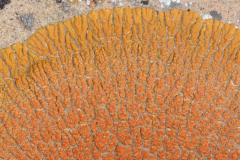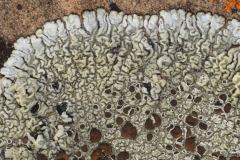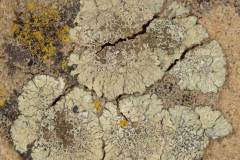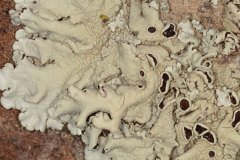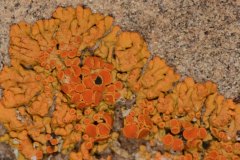Lichens
A Brief Introduction to Lichens
Lichens are symbiotic organisms composed of a “mycobiont” ( aka: the fungal partner) and a “photobiont” (most often an algal partner but occasionally a cyanobacteria partner). It is assumed that the mycobiont and photobiont in lichens have formed a mutualism where both parties benefit- the mycobiont provides protection while the photobiont provides nutrients via photosynthesis. However, alternative hypotheses have asserted that perhaps the symbiosis is the result of a parasitic relationship- the mycobiont leeches nutrients from the photobiont! Lichen taxonomy reflects the taxonomy of the mycobiont- thus classification of lichen species is determined by the fungal species. There are about 20,000 documented lichen species worldwide!
Recent research has suggested that there may be a third symbiotic organism essential to lichens. Lichens have been found to have highly structured bacterial communities internally. These communities consist of bacterial which seem to be unique to each species. But there is disagreement as to whether these communities are integral to lichen symbiosis or are mearly opportunistic. A majority of lichens have green algae photobionts which cannot fix nitrogen as can the lichens with cynobacteria. This function may be provided by nitrogen fixing bacteria. In addition, other bacteria may be essential in acquiring other essential elements like phosphorus and amino acids.
Lichens can grow just about anywhere. In fact, lichens cover approximately 8% of the earth’s surface! Due to their ability to withstand drought and sub-zero temperatures, lichens are known for living in extreme habitats such as deserts and the frozen tundra of Antarctica. While lichens are durable organisms in these extreme ecosystems, they are notably sensitive to air pollution. Because of this lichens are considered bio-indicators and their presence can predict an ecosystem with healthy air quality. Lichens also reproduce both asexually and sexually. While the majority of lichens do reproduce sexually, knowing reproduction method can be a helpful key to species identification.
Identifying Lichens in the Field (what to look for!)
Lichens are more difficult to identify than vascular plants. Often, a confident and assured lichen identification requires a microscope due to minute
Identifying Lichens in the Field
Lichens are more difficult to identify than vascular plants. Often, a confident and assured lichen identification requires a microscope due to minute surface details such as spore size and number. Bringing a hand-lens into the field can be helpful for species identification. However, some are species are easier to delineate than others. Here are a few “starter” terms to know when attempting to identify lichens:
Thallus: the thallus is the composite body of a lichen. The growth form of the thallus can be an important tool for lichen identification.
- Lobes: “branches” located on the thallus of a lichen
- Rhizines: rhizines are the root-like structure that attach the lichen to its substrate
- Ascocarp: the structure on sexually reproducing lichens that bares the spores often resembling a cup or disc
- Soredia: in asexually reproducing lichens, soredia are powder-like propagules of fungal hyphae (filamentous tissue of the the mycobiont partner)
- Soralia: localized clusters of soredia
Lichen Thallus Growth Forms
Crustose: crustose lichens are firmly attached to their substrate. Imagine these lichens as a “crust” covering rocks, trees, the sides of buildings, etc
Fruticose: fruticose lichens are by far the most three dimensional lichens, this growth form almost resembles a shrub. Fruticose lichens attach to their substrate by at least one holdfast.
Foliose: foliose lichens are leaf-like in appearance, often scaly or bumpy. They are distinguishable from crustose lichens in that they have two distinct sides (top and bottom) where as crustose lichens have only one exposed surface.
Squamulose: squamulose lichens are a subset of foliose lichens- squamulose thalli are distinguished by the presence of over-lapping lobes called squamules.
Sources
U.S. Forest Service. (n.d.). Lichens
Tripp, E. 2017. Field Guide to the Lichens of White Rocks, (Boulder Colorado). The University Press of Colorado. Boulder, CO. 192 pp.
Tripp, E. & Lendemer, J. 2020 Field Guide to the Lichens of Great Smoky Mountains National Park. The University of Tennessee Press: Knoxville, TN, 572 pp.
Some Lichen Species Photos
1. Photos are in alphabetical order by scientific name
2. Go to the bottom to scroll through the photos
3. Or click on a photo to see a full-sized image, once in the full-sized image mode:
Use the left-right arrows to scroll to the next image.
Click the arrow on the bottom left to see a slideshow.
Click the “i” to see information about the plant.
Click on the bottom down arrow to remove the thumbnail carousel


